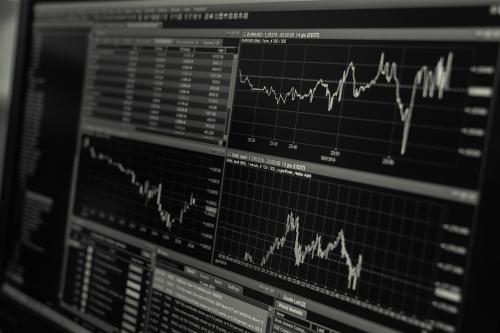What roles do you play with regard to your company’s ESG function?
Ben Colton –Our primary responsibility is voting and engagement. We developed a stewardship program focused on governance and sustainability issues. We work closely to integrate R-Factor [SSGA’s sustainability score] into our stewardship work and to integrate ESG across our company.
Rob Walker –A lot of stuff we do has wide applications and often we’re at the forefront of things changing on a sector basis as well. Social issues around health and safety and working from home are front and center for us right now, and I think will be so in a post-Covid-19 world as well.
How do you decide your key ESG metrics? Are these guiding principles ingrained in the firm’s philosophy or do you revisit these metrics on a regular, periodic basis?
BC –R-Factor is our ESG scoring methodology and that focuses on financial materiality. We’re really going to center everything around that. It focuses on a transparent framework – that’s why we really like SASB because that is very transparent. We’re a long-term investor and we’re interested in long-term sustainable returns, so we focus on value, not just values.
We update our R-Factor scores on a monthly basis. There are a number of proprietary data points we gather during engagement in order to figure out how companies are incorporating sustainability into their corporate structure. We also take into account market trends and emerging issues as we establish our market and sector focus areas. Gender equality, capital management and climate change are all long-term issues.
What are these key metrics?
BC –In 2019 we introduced corporate culture as a long-term metric for ESG. If you look more recently, we have shifted priorities to focus more on Covid-19, and we understand discussions have shifted in light of the crisis we all face. Employee wellbeing and safety, crisis management and liquidity issues are all critical now.
RW –Our sector/theme approach lets us have the best of both worlds. Our sector basis lets us look at shorter-term issues while our thematic approach lets us look at three to five-year trends we think will affect business globally. We spend a lot of time talking to clients asking for their input on these issues because we are engaging on their behalf. In 2020 we have a new thematic focus on environmental management, which came from talking to clients interested in hearing about how operations affect environmental impact.
BC –We often like to take a deep dive on sectors because they are frequently industry-specific, and we like to see how boards are reacting to these issues. We see the opportunities and challenges boards are facing within specific industries.
How do you collect data for reporting purposes?
BC –In terms of our reporting, we collect primary and secondary data. We have a stewardship database that houses a lot of the information we seek, not just information and insights from engagement. We have a proprietary tiering system on how we tier companies in terms of their ESG. We also use this data for screening within our stewardship program.
RW –Our engagement insights are one of the most valuable because we are a holder of capital and we want to be a long-term partner with these companies. These insights allow us to look back and see the transition a company has gone through, whether the issue is compensation, climate or board diversity. It allows us to access information that is extremely valuable.
BC –Our stewardship database/engagement platform collects our insights from engagement and we also have our R-Factor scoring available to everyone in the firm to help them make judgments on ESG.
How do you approach ESG reporting? Do you use a variety of platforms and could you elaborate on those?
RW –We spend a lot of time on our annual stewardship report where we can discuss how we have engaged and voted on ESG issues. The evolution we’re seeing this year is that there are more shareholder proposals on climate lobbying than is typical, and that’s a significant change.
Starting with last year’s report, we’ve been using the R-Factor to give sector insights. Our quarterly stewardship reporting is another area where we’re trying to show our clients how we’re voting, what we’re doing on a regulatory/collaborative basis. As we continue to develop the R-Factor platform, there will be other ways we can do that.
BC –Reporting is absolutely key for us. We rely on disclosure to make our analyses and we also have an obligation as fiduciaries to report our activity to our shareholders. We try to be as transparent as we can be on our voting guidelines and provide frameworks on how we are analyzing shareholder proposals.
All of our votes across our holdings will be available on a quarterly basis [in the future], and that improves transparency and accountability. We are looking to improve our climate reporting and plan a stand-alone report on how we are approaching climate and climate issues.
How has technology changed the way that you approach reporting?
BC –We continue to leverage technology to make our program as impactful as possible. Reporting from the issuer side has improved as well, and the ability to gather reporting is more easily accessible. It has allowed us to scale up our ability to synthesize information.
Are you finding that the ESG information that investors are seeking has changed over time? If so, how has that focus shifted?
BC –I think we’ve seen a shift toward not just focusing on valuations of tangible assets, but also a focus on intangible assets such as human capital. Investors are recognizing ESG more as a fiduciary duty and incorporating this into their processes.
A lot of institutions are increasingly looking at ESG information as financially material and part of their fiduciary duty, and that trend will continue, especially as standards continue to evolve, such as SASB's.
RW –I think in the past the focus for investors was to gather ESG data to understand characteristics of firms. Where the focus is heading now is the emergence of one or two global standards, of which SASB is definitely one that allows investors to focus on materiality, that is transparent and allows a comparability of companies. I hope that's where we end up because that is the only way you can ensure your data is material and robust.
In terms of shareholder engagement, do you work more with the investor relations team or the corporate secretary’s office?
BC –I think this has a regional component. The engagement component varies by jurisdiction, with a different engagement culture in different jurisdictions. In the US, the dialogue came from an IR level, which was increasingly wanting access to boards and board members, and often you want to talk to a board member on certain issues, but for other issues it might be worth a quick check with IR. In Japan, we’re seeing more access to corporate secretaries and board members themselves.
RW –The biggest change I see is that we deal more directly with the board in Europe. Any interactions with IR involve getting the chair or the head of the remuneration committee into the room. Conversations with boards tend to be more high profile, and they require a bit more preparation. These conversations also tend to be more specific in nature and that’s useful for insights we can develop for our sector or thematic approach.
BC –We’re long-term investors, so we are looking to have constructive relationships and partnerships with the companies we invest in. We’re trying to work together toward the goal of long-term sustainable returns.
RW –Companies appreciate that and recognize that we’re trying to be constructive. We take a long-term view so when we do voice our opinion, we are listened to.
Is it important to address opportunities, and not just risks, posed by the issue you focus on in your ESG reporting and engagement?
RW –Definitely. As part of our stewardship program, we are looking to help companies improve their ESG. We have been engaging with and voting against companies where we feel they are laggards based on our criteria.
We want to reduce our risk across portfolios, and over the years we have been running screens, such as our sustainability screens and corporate governance screens. This allows us to engage with those companies and improve their disclosure in terms of ESG. Companies recognize we’re here to help and we’ve published a lot of thought leadership on things like compensation and climate change.
BC –When I think about opportunities and the Task Force on Climate-related Financial Disclosures (TCFD) reporting framework, I think when boards start to approach climate change in a more systemic manner you see them incorporate more climate risks and opportunities into their operational framework. We integrate the opportunity set into our criteria. We want to see how companies are making themselves climate-resilient and taking the opportunities to improve themselves in these areas.
What advice would you give to Corporate Secretary readers in terms of how they could formulate their own ESG reporting actions?
BC –You need to agree upon what the financially material ESG metrics are for your company. Familiarize yourself with SASB, and understand it’s a floor, not a ceiling. Think about how you are approaching ESG in a long-term strategy. Think of what the risks and opportunities are and evaluate the proper way the board can oversee things. Create an infrastructure internally for receiving information on the ESG metrics you’ve identified and build an urgency around getting data and metrics at the board level.
Have ESG goals, manage them and align everything with appropriate incentives. Articulate those metrics to investors transparently and publicly.
RW –I think the biggest challenge for companies is understanding what investors want in terms of ESG metrics. They often don’t know what they should be disclosing to investors. I’d like companies to use SASB as their floor, because it’s about materiality, and that’s what investors are increasingly looking for so they can understand the quality of ESG in their portfolios. The more companies that do that, the more quality data you have that can be understood.
If you comply with SASB, you’re fairly aligned with TCFD and the CDP. The board also has to be engaged and taking an interest in aligning goals and making sure everyone is on board.
This article originally appeared in the Summer 2020 issue of Corporate Secretary








